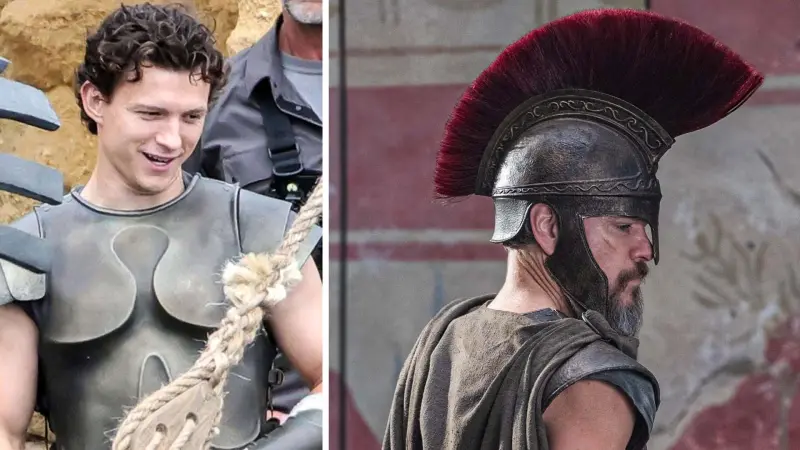Archaeologists in Turkey recently unearthed an exceptionally preserved mosaic inside the remains of a building from the 3rd century. One section of the three-panel artwork includes a reclining skeleton with an arm over its head, holding a glass of wine and resting an elbow on a loaf of bread. On both sides of its head reads the phrase “Be Cheerful and Live Your Life” written in Greek.
The purpose of the building surrounding the mosaic, and even when it was made is currently being debated. Some experts believe the triptych was simply the floor of a wealthy person who could afford to have it built, while others think it might be a message in a soup kitchen urging people to get their food quickly and leave.
It was found in 2012 during the construction of a cable car system in the Antakya district of Hatay province Antioch in antiquity, the southernmost province of Turkey.
It is believed to have been the emblema, the elaborate centerpiece of a mosaic floor, in the triclinium dining room of an elegant villa. There are three scenes inside a rectangle with a woven guilloche border. On one end is missing a large section but the head and arms of a servant carrying a flame are visible. This represents the heating of the bath. The middle scene is almost intact and depicts two men moving towards a sundial on a column. The leader is a young man who was of some rank in the household, the son of the owner, perhaps, while the his manservant or butler follows. The sundial is set to between 9:00 and 10:00 PM and the text refers to him being late for dinner. The last panel has the recumbent skeleton, holding a drinking cup in one hand, his other arm thrown casually over his head, two loaves of bread and a wine amphora by his side. The motto “Be cheerful and live your life” is written on both sides of his head.
Writer İlber Ortaylı disputes the eat, drink and be merry interpretation. He reads it as “You get the pleasure of the food you eat hastily with death” and thinks the structure was not a private home of a wealthy person, but a sort of soup kitchen trying to hustle people out the door as quickly as possible.
There’s some confusion over the date of the mosaic. The first article about the find that I read said it was from the 3rd century, which means AD, but later stories by the same press outlet date it to the 3rd century BC. That in turn has been picked up by the international press. Greek was spoken and written by the elites in both periods, so the words are of no particular help.
This one says “Hatay is known for its Roman-era mosaics dating back to the second and third centuries BC,” but those are not Roman dates. Antioch was founded by Alexander the Great’s general Seleucus I Nicator in 300 BC and was ruled by Seleucid monarchs until 64 BC when it was absorbed into the Roman Syrian province as a free city.






